Regulatory Carbon

What are the risks associated with investing in the carbon trading market ?
The carbon trading market offers lucrative investment opportunities but also carries significant risks, including price volatility, lack of transparency, legal and regulatory changes, and environmental impacts. To mitigate these risks, investors should diversify their portfolios, conduct thorough research, stay updated on regulatory changes, and consider the environmental impact of their investments. By taking these steps, investors can potentially reduce their exposure to risks while still benefiting from the profitability of the carbon trading market.

What is the regulatory environment for private equity ?
Private equity firms are subject to various regulatory requirements, including disclosure, anti-money laundering and know your customer regulations, securities laws, and tax laws. The specific regulations vary across different regions and countries, with the United States being regulated by the Securities and Exchange Commission (SEC) and the Financial Industry Regulatory Authority (FINRA), Europe by the Alternative Investment Fund Managers Directive (AIFMD), and Asia having widely varying regulations across different countries. Despite these regional variations, key principles such as transparency, disclosure, and compliance with securities and tax laws are common across all jurisdictions.

How do carbon credits differ from carbon taxes ?
Carbon credits and carbon taxes are two distinct mechanisms that aim to reduce greenhouse gas emissions and mitigate climate change. While both strategies involve a financial incentive to encourage companies and individuals to reduce their carbon footprint, they operate differently in terms of their structure, implementation, and impact. Carbon credits represent a certificate or a tradable allowance proving that a specific amount of carbon dioxide (or its equivalent in other greenhouse gases) has been reduced, avoided, or sequestered by an emission-reducing project. Companies or countries can earn carbon credits by investing in projects that reduce emissions below a certain baseline, such as renewable energy projects or reforestation efforts. These credits can then be sold to entities that are looking to offset their own emissions or meet regulatory requirements. The price of carbon credits is determined by supply and demand in markets where they are traded. On the other hand, a carbon tax is a fee imposed on the burning of carbon-based fuels (coal, oil, gas) that are responsible for greenhouse gas emissions. Governments set a tax rate per ton of CO2 emitted, which is paid by companies and sometimes individuals using fossil fuels. The goal is to make polluting activities more expensive, thereby encouraging a shift towards cleaner alternatives. Carbon taxes are typically implemented at a national level through legislation. The revenue generated from the tax can be used to fund environmental initiatives or be returned to taxpayers in various ways. Key differences between carbon credits and carbon taxes include their regulatory vs. voluntary nature, direct vs. indirect incentives, and price certainty vs. market fluctuation. Carbon taxes offer price certainty for businesses when planning expenses, while carbon credit prices can fluctuate based on market demand and the success of emission reduction projects. In summary, both carbon credits and carbon taxes serve important roles in addressing climate change, but they do so through different means and with different outcomes.

How is the price of carbon credits determined in the carbon trading market ?
The price of carbon credits in the carbon trading market is determined by various factors, including supply and demand, regulatory policies, and market dynamics. The balance between supply and demand significantly affects the price, with high demand increasing the price and oversupply decreasing it. Regulatory policies such as cap-and-trade systems and carbon taxes also play a crucial role in setting limits on emissions and creating incentives for companies to reduce their emissions or purchase carbon credits to offset them. Market dynamics such as speculation, liquidity, and transparency can also impact the price of carbon credits. As awareness of climate change grows, the demand for carbon credits is likely to increase, driving up their price. However, ensuring transparent and efficient operation of the carbon market is essential to maximize its potential benefits for both companies and the environment.
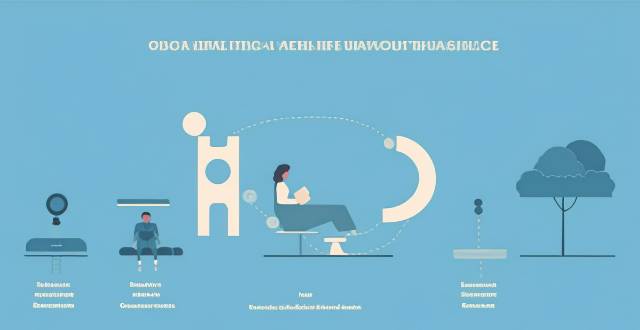
What is the process for obtaining approval from regulatory agencies for a new vaccine ?
The process for obtaining approval from regulatory agencies for a new vaccine includes pre-clinical trials, phase 1, 2, and 3 clinical trials, submission to regulatory agencies, and post-marketing surveillance. This process ensures that the vaccine is safe and effective before it is made available to the public.

How effective is a carbon tax in reducing greenhouse gas emissions ?
A carbon tax is a fee on burning carbon-based fuels aimed at reducing greenhouse gas emissions. It creates economic incentives for behavior change, technology innovation, and revenue generation. The effectiveness depends on rate setting, equity concerns, compliance, political feasibility, and international coordination.
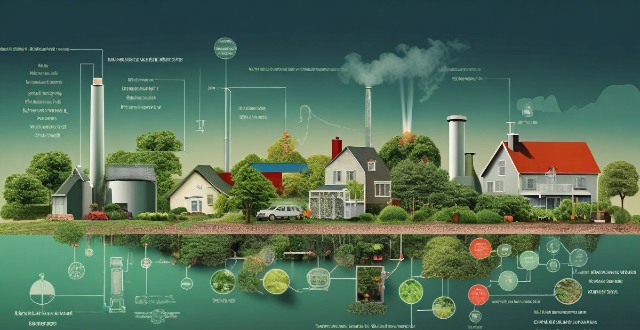
What are the benefits of implementing a carbon credit system ?
The carbon credit system is a market-based approach to reducing greenhouse gas emissions. It provides economic incentives for emission reduction, promotes innovation and technology adoption, enhances environmental stewardship, and serves as a regulatory and policy tool. By creating a market value for emission reduction, the system encourages businesses to reduce their carbon footprint and fosters global cooperation towards sustainability goals.

Can developed and developing countries achieve carbon neutrality at the same pace ?
The article discusses the challenges and potential solutions for developing countries to achieve carbon neutrality at the same pace as developed countries. The key differences between developed and developing countries in terms of economic development, technological advancements, and political will are highlighted. Developed countries have higher GDP per capita, more resources for research and development, and greater financial capacity to invest in renewable energy infrastructure. In contrast, developing countries have lower GDP per capita, limited resources for research and development, and less financial capacity to invest in renewable energy infrastructure. Technological advancements also play a crucial role in achieving carbon neutrality. Developed countries have advanced technology and innovation in clean energy sectors, access to cutting-edge research facilities, and well-established industries with experience in implementing sustainable practices. In contrast, developing countries have emerging technology and innovation in clean energy sectors, limited access to advanced research facilities, and infant industries with less experience in implementing sustainable practices. Political will is another factor that affects the pace of achieving carbon neutrality. Developed countries have stronger political commitment to addressing climate change through policy measures, more established regulatory frameworks for promoting renewable energy adoption, and greater public awareness and support for environmental issues. In contrast, developing countries have varying levels of political commitment to addressing climate change through policy measures, less established regulatory frameworks for promoting renewable energy adoption, and lower public awareness and support for environmental issues due to other pressing concerns such as poverty and healthcare. Developing countries face several challenges in achieving carbon neutrality, including lack of financial resources, technological barriers, and infrastructure challenges. Potential solutions for developing countries include international cooperation and funding, capacity building and education, and policy interventions and regulatory reforms. By working together through these solutions, both developed and developing countries can make significant progress towards a more sustainable future.

Is it realistic for all industries to aim for carbon neutrality ?
The text discusses the feasibility and challenges of achieving carbon neutrality across all industries. It highlights industry-specific challenges, economic implications, and technological limitations as significant hurdles. However, it also points out opportunities such as innovation, market advantage, and regulatory compliance that can arise from pursuing carbon neutrality. The strategies for achieving carbon neutrality include improving energy efficiency, switching to renewable energy sources, using carbon capture and storage technology, and offsetting emissions through various projects. While the path to carbon neutrality varies by industry, collaboration between different stakeholders is crucial for creating a sustainable future.

How does a carbon credit system work ?
A carbon credit system is a market-based approach that incentivizes companies, organizations, and individuals to reduce their greenhouse gas emissions. It works by setting emission reduction targets, generating carbon credits for verified emission reductions, allowing the trading of these credits, and using them for regulatory compliance or offsetting emissions. This system fosters economic efficiency, flexibility, and innovation while encouraging global cooperation on climate action. However, challenges such as ensuring permanence of reductions and maintaining system integrity must be addressed to ensure its effectiveness.

How does the carbon trading market contribute to reducing greenhouse gas emissions ?
Carbon trading markets are a key tool in the global fight against climate change by offering economic incentives for reducing greenhouse gas emissions. They set a price on carbon, encouraging businesses to invest in cleaner technologies and practices. These markets also promote innovation, international cooperation, and the implementation of robust regulatory frameworks. Additionally, they raise public awareness about the importance of combating climate change. Overall, carbon trading markets play a crucial role in mitigating the effects of climate change by creating a structured approach to reducing GHG emissions.
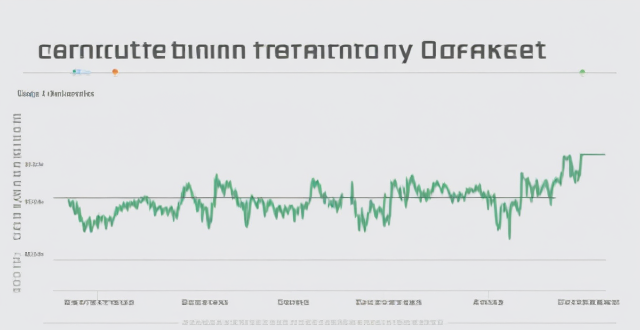
How can I invest in the carbon trading market ?
The carbon trading market offers a lucrative investment opportunity for those interested in environmental sustainability and financial gain. To invest successfully, one should understand the basics of carbon trading, research different carbon markets, choose a broker or exchange, determine an investment strategy, and start trading while managing risk.

How can a carbon tax be used to encourage the development of renewable energy sources ?
A carbon tax is a fee on burning carbon-based fuels that aims to reduce emissions by making fossil fuels more expensive, encouraging the use of renewable energy sources. It directly impacts prices, changes consumer behavior, provides economic incentives for renewables, creates market signals for businesses, and supports regulatory frameworks. This leads to increased investment in research and development, subsidies, long-term planning security, innovation, and stricter efficiency standards, all of which contribute to the development of renewable energy sources.

Are there any environmental risks associated with carbon sequestration techniques ?
The topic summary for the provided text is as follows: **Carbon Sequestration Techniques and Environmental Risks** - Carbon sequestration techniques aim to reduce greenhouse gas impact on climate change by capturing and storing CO2. - Different methods include geological storage, ocean storage, terrestrial sequestration, and enhanced weathering. - Each technique comes with potential environmental risks such as leakage, induced seismicity, ocean acidification, soil health impacts, biodiversity changes, and mineral extraction impacts. - Management and mitigation strategies involve monitoring, site selection, regulatory oversight, and public engagement to minimize these risks.

What are the challenges associated with implementing carbon capture on a large scale ?
Carbon capture and storage (CCS) is a technology that aims to reduce greenhouse gas emissions by capturing carbon dioxide (CO2) from industrial processes and storing it underground. Implementing CCS on a large scale poses several challenges, including high costs, technology maturity, storage capacity, regulatory and legal barriers, public perception, and energy requirements. Overcoming these challenges is essential for the successful implementation of CCS on a large scale. Collaboration among governments, industry, and researchers will be necessary to develop more efficient and cost-effective carbon capture technologies, establish clear regulations and liability frameworks, and raise public awareness about the benefits of CCS.

What are the legal obligations for companies regarding their carbon footprint ?
Companies face various legal obligations concerning their carbon footprint aimed at reducing greenhouse gas emissions and mitigating climate change. These include mandatory and voluntary emissions reporting, regulatory compliance through emissions caps and permitting, corporate governance measures like board oversight and stakeholder engagement, financial responsibilities such as carbon taxes and trading schemes, commitments under international agreements, and potential civil liabilities for negligence or human rights violations related to pollution. Companies must take proactive steps to reduce emissions, engage stakeholders, and contribute positively to global climate action, with specific requirements depending on the jurisdiction, industry, and individual company's commitments.
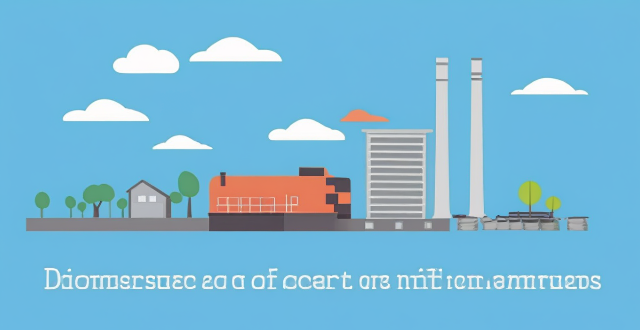
What is the significance of carbon capture and storage technologies ?
The text discusses the importance of carbon capture and storage (CCS) technologies in mitigating climate change, enabling clean energy transition, and supporting industrial processes. It highlights three main methods of capturing CO2: post-combustion capture, oxy-fuel combustion, and pre-combustion capture. The text also describes various ways to store CO2, such as geological storage, ocean storage, and enhanced oil recovery (EOR). Additionally, it mentions the potential for carbon utilization through sequestration, synthetic fuels production, and industrial applications. However, the text acknowledges challenges such as cost, energy penalty, public acceptance, and regulatory frameworks that need to be addressed for successful implementation of CCS projects.

What are the benefits of carbon offsetting for businesses ?
Carbon offsetting is a strategy that businesses can use to reduce their carbon footprint and mitigate the impact of their operations on the environment. By investing in projects that offset their emissions, businesses can demonstrate their commitment to sustainability and contribute to global efforts to combat climate change. Some of the benefits of carbon offsetting for businesses include reduced carbon footprint, improved reputation and brand image, financial benefits, and stakeholder engagement. By investing in carbon offsetting projects, businesses can demonstrate their commitment to sustainability and contribute to global efforts to combat climate change.

What are the economic benefits of transitioning to a low-carbon workforce ?
The transition to a low-carbon workforce is crucial for mitigating climate change and offers significant economic benefits. These include job creation, innovation, cost savings, improved competitiveness, risk mitigation, and long-term economic growth. By adopting sustainable practices, businesses can reduce operating costs, enhance their brand image, and gain a competitive edge in markets where eco-friendliness is valued. Additionally, the shift to low-carbon operations fosters resilience against climate-related risks and supports the development of sustainable economic models. Overall, embracing a low-carbon economy is not only environmentally responsible but also a smart economic strategy for individuals, businesses, and nations.

What regulatory challenges do Fintech companies face ?
Fintech companies face regulatory challenges such as compliance with existing regulations, adapting to evolving regulations, and balancing innovation and regulation. They must deal with lack of clarity in laws, conflicting regulations, high cost of compliance, rapid changes in regulations, collaboration with regulators, fostering innovation, risk management, and educating stakeholders. To succeed, fintech companies must stay informed, collaborate with regulators, foster innovation while managing risks, and educate their stakeholders about regulatory requirements.

What are the potential benefits and drawbacks of using market-based mechanisms like carbon trading in global climate governance ?
The text discusses the potential benefits and drawbacks of using market-based mechanisms like carbon trading in global climate governance. The benefits include cost-effectiveness, flexibility and innovation, economic incentives, and global cooperation. However, there are also drawbacks such as equity concerns, complexity, uncertainty, and lack of public acceptance. It is important to consider these factors carefully when designing a carbon trading system to ensure that it is equitable, transparent, and effective in reducing carbon emissions.

Can environmental subsidy policies help reduce carbon emissions ?
Environmental subsidy policies can help reduce carbon emissions by promoting renewable energy, enhancing energy efficiency, supporting waste reduction initiatives, and funding research and development of carbon capture and storage technologies. However, these policies must be carefully designed and adequately funded to avoid market distortions and ensure long-term sustainability without creating dependence on government support.

How can a carbon tax be designed to minimize negative impacts on businesses ?
A carbon tax is a fee on burning carbon-based fuels to reduce emissions and promote clean energy. To minimize its negative impact on businesses, consider gradual implementation, incentives for innovation, clear policy, revenue neutrality, support for affected industries, collaboration, and monitoring. This balances environmental goals with economic realities for sustainable development.

How effective are reforestation efforts in offsetting carbon emissions ?
Reforestation efforts can effectively offset carbon emissions by sequestering carbon dioxide through photosynthesis. Factors influencing its effectiveness include the type of trees planted, location and soil quality, management practices, and timescale. Challenges such as saturation points, land availability, biodiversity concerns, and water resources impact also need to be considered. A balanced approach combining reforestation with other strategies is necessary for meaningful climate change mitigation.

Are zinc-carbon batteries safe to use ?
Zinc-carbon batteries are a common type of battery used in many household devices, such as flashlights, remote controls, and toys. While they are generally safe to use, there are some precautions that should be taken to ensure their proper handling and disposal. These include avoiding short circuits by keeping the terminals from touching each other or any metal objects, storing them in a cool, dry place away from extreme temperatures and out of reach of children and pets, and disposing of them properly at a recycling center or store that accepts used batteries. Despite these precautions, zinc-carbon batteries offer several benefits, including being cost-effective, widely available, and having a long shelf life.
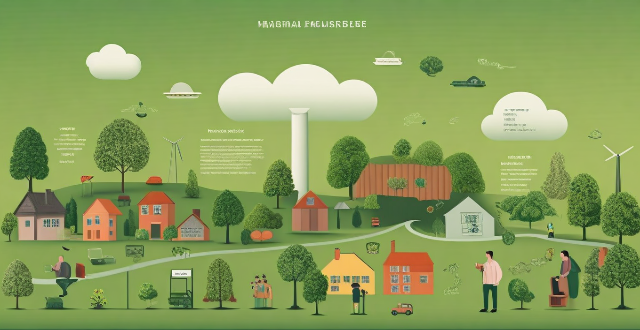
What are the benefits of carbon sequestration in reducing global warming ?
Carbon sequestration helps to reduce greenhouse gas emissions and stabilize climate conditions, leading to improved air quality and public health. It also promotes sustainable development by supporting renewable energy sources and creating green infrastructure. Additionally, carbon sequestration creates job opportunities and stimulates innovation in various industries. In the long term, it preserves biodiversity and prevents extreme weather events caused by climate change.

How can a carbon tax be implemented fairly ?
The text discusses the implementation of a fair carbon tax, which is a fee on burning carbon-based fuels to reduce emissions contributing to global warming. It suggests methods such as progressive taxation, revenue neutrality, renewable energy incentives, public education, phased implementation, and international cooperation to ensure the tax does not disproportionately affect low-income households or certain industries.

What countries have successfully implemented a carbon tax ?
Countries that have successfully implemented a carbon tax include Canada, Sweden, Finland, Norway, Switzerland, and the UK. These countries have set different rates for their carbon taxes and have seen varying degrees of success in reducing greenhouse gas emissions. While there are challenges associated with implementing such a tax, these countries demonstrate that it can be an effective tool for achieving environmental goals.

What are the economic implications of pursuing carbon neutrality for a country ?
Pursuing carbon neutrality has both positive and negative economic implications for a country, including job creation, innovation, energy independence, short-term costs, impacts on traditional industries, and potential carbon leakage.

Does a carbon tax lead to "carbon leakage" where companies move to areas without the tax ?
The article discusses the potential for "carbon leakage," where companies might relocate to regions without a carbon tax to avoid additional costs. It highlights economic impacts, geographical considerations, industry-specific impacts, and mitigating factors that could affect the outcome of implementing a carbon tax. The potential negative outcomes include job losses and environmental displacement, while positive outcomes could be innovation and efficiency improvements. The conclusion emphasizes the need for coordinated international efforts and support for affected industries to minimize leakage and promote sustainable practices.